Donate broken, old jewelry today: IU metalsmiths to rework, recycle pieces
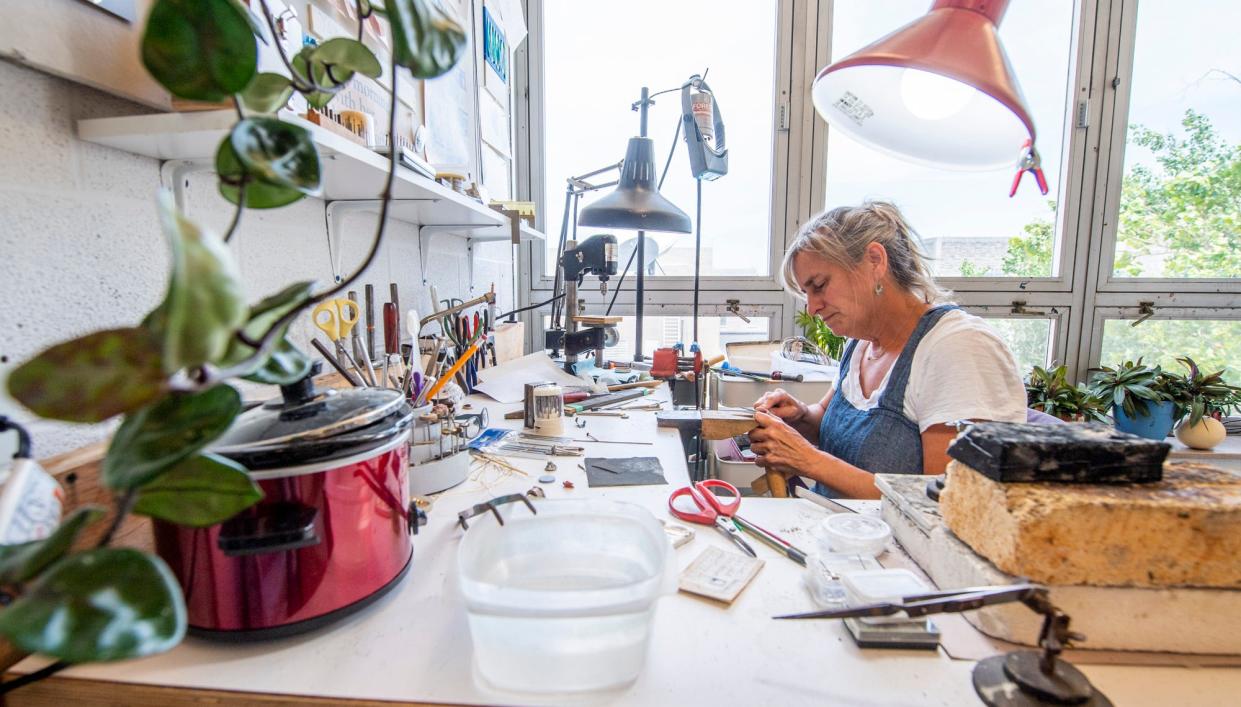
A peek inside your jewelry box surely reveals some keepsakes — your grandmother's heirloom pin, a gifted locket, perhaps even a gold ring. But you'll also probably spy a few less-treasured items — a lonely earring missing its pair, a broken bangle, a chunky statement necklace circa 2003.
Regardless of whether it's broken or just out of style, don't toss your jewelry in a landfill or let it languish in your drawer. Instead, you can donate outdated or broken pieces to "Radical Jewelry Makeover Bloomington," a community jewelry mining project by nonprofit Ethical Metalsmiths that will use Indiana University metalsmithing students to rework the materials into new pieces.
Granny flats: A cheaper way to build a living space in Bloomington? What is an ADU?
Donated jewelry will be given new life with a hot flame and creative eye, and the reinvented pieces may even be displayed in a local exhibition. Bloomington residents also get a chance — and for donors, a discount — to purchase one of the reworked items in spring.
IU metalsmiths to transform donated jewelry for showcase
During a semester-long course this fall, students in the IU Eskenazi School’s Metalsmithing and Jewelry Design and several other universities in the Midwest will use donated materials to design and forge new pieces of jewelry.
According to Nicole Jacquard, IU professor and head of the Eskenazi School's metalsmithing and jewelry design area, this project sharpens students' technical skills while also promoting more ethical resourcing.
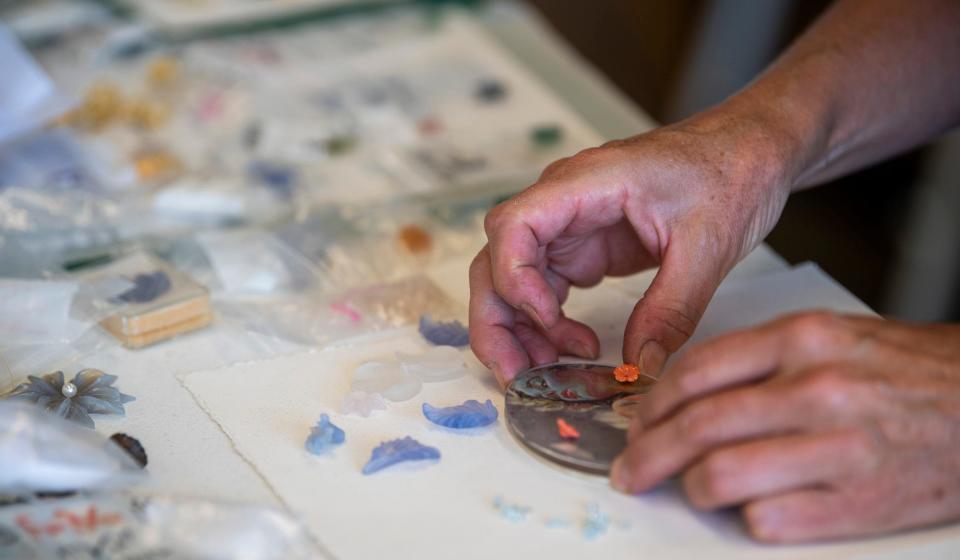
"You just start to build on these techniques as you move through the program. It's a perfect project for the beginning students in terms of the variety of jewelry that would be donated," Jacquard said, noting many students will be exposed to working with more alternative materials — ranging from precious metals to more unique options like feathers, wood, leather and plastic — than in the past.
The RJM program is facilitated by Ethical Metalsmiths, a nonprofit based in Cincinnati, Ohio, that advocates for transparent and responsible jewelry practices through project-based learning.
For each typical project that Ethical Metalsmiths hosts, around 100 pounds of donated material is generated. Any materials not directly used for this project will be used by Ethical Metalsmiths in future workshops, such as the one hosted at IU in spring 2022.
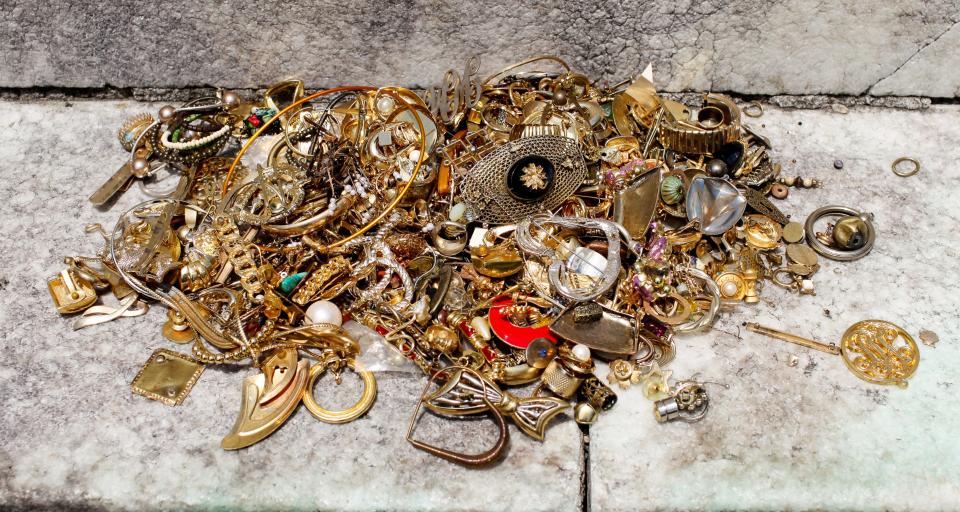
The donation drive is open now until September in several university communities. With the exception of two out-of-state university participants, all of the collected materials will be pooled together. In September, participants — college students across the Midwest, mostly — will come to IU's campus to sort through the donations and categorize the materials. For the next few months, participants will break apart materials, create new designs, and piece them together.
In IU's case, the program will be broken up into beginning, intermediate and advanced classes in order to involve all students in the metalsmithing and jewelry design area.
These pieces, alongside ones created at other university campuses, will be juried and a slate will be selected for exhibition in January. The exhibition will be at the Grunwald Gallery of Art, 1201 E. Seventh St., from Jan. 12 through March 2, 2024, with an opening reception on Jan. 19, 5-8 p.m. People will be able to purchase items from the collection during this time.
Fast fashion and unethical practices: it happens in jewelry-making, too
The project is designed to highlight the real-life consequences of "fast fashion" — rapid-paced design and inexpensive product manufacturing by mass-market retailers in response to trends. While many think of fashion fast in terms of clothing sold by big retailers like Shein and Fashion Nova, inexpensive — and cheaply made ― items also permeate the jewelry market.
When it comes to precious metals and jewels, Jacquard said consumers should have concerns.
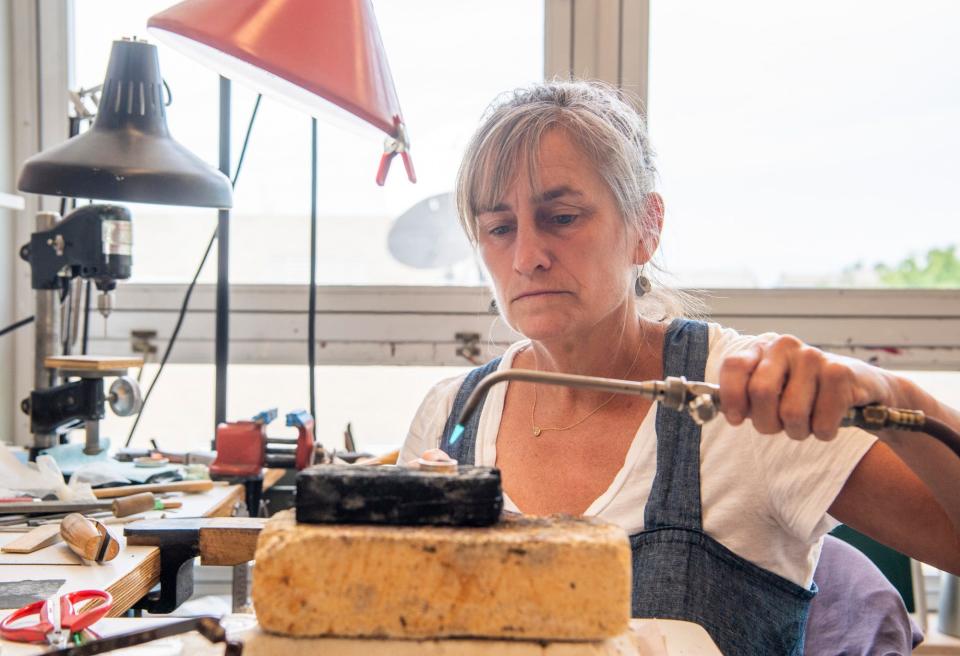
"Where do all these gemstones come from? How are they sourced? How are those people who are doing the mining being treated?” Jacquard said.
Materials such as metals and gemstones are often mined in some of the world's poorest countries, areas that have been deemed sacred either by cultural or religious significance and disputed territories. Mining in the United States has contributed to serious public health, safety and environmental concerns. The U.S. Government Accountability Office reports the Environmental Protection Agency estimates abandoned hardrock mines have contributed to the contamination of 40% of the country’s rivers and 50% of all lakes. Hard rock mining is considered one of the most toxic industries in the U.S.
Hoosier National Forest: Past and present converge at Lick Creek settlement, Buffalo Springs restoration project
In 2007, Kathleen Kennedy was a college student participating in an RJM program. What was initially considered a unique workshop quickly spawned something much bigger.
"That's what really kind of got me thinking and more aware of material sourcing and transparency issues within the jewelry field. It really shifted my focus of this 'little undergraduate student who didn't really think outside of her studio' into like, 'Oh, I am a part of a much bigger cycle of things,'" Kennedy said.
Now, Kennedy is RJM's co-director, connecting with artists across the world about the importance of reusing materials and being more aware of where the materials are sourced.
Through RJM programs like the one being done in Bloomington, community members act as volunteer “miners” of their unwanted jewelry. Participants will then learn how to "upcycle" or reuse these materials that may have otherwise ended up in a landfill.
"You learn about this community of like-minded jewelers and consumers who are working towards a more sustainable field," Kennedy said.
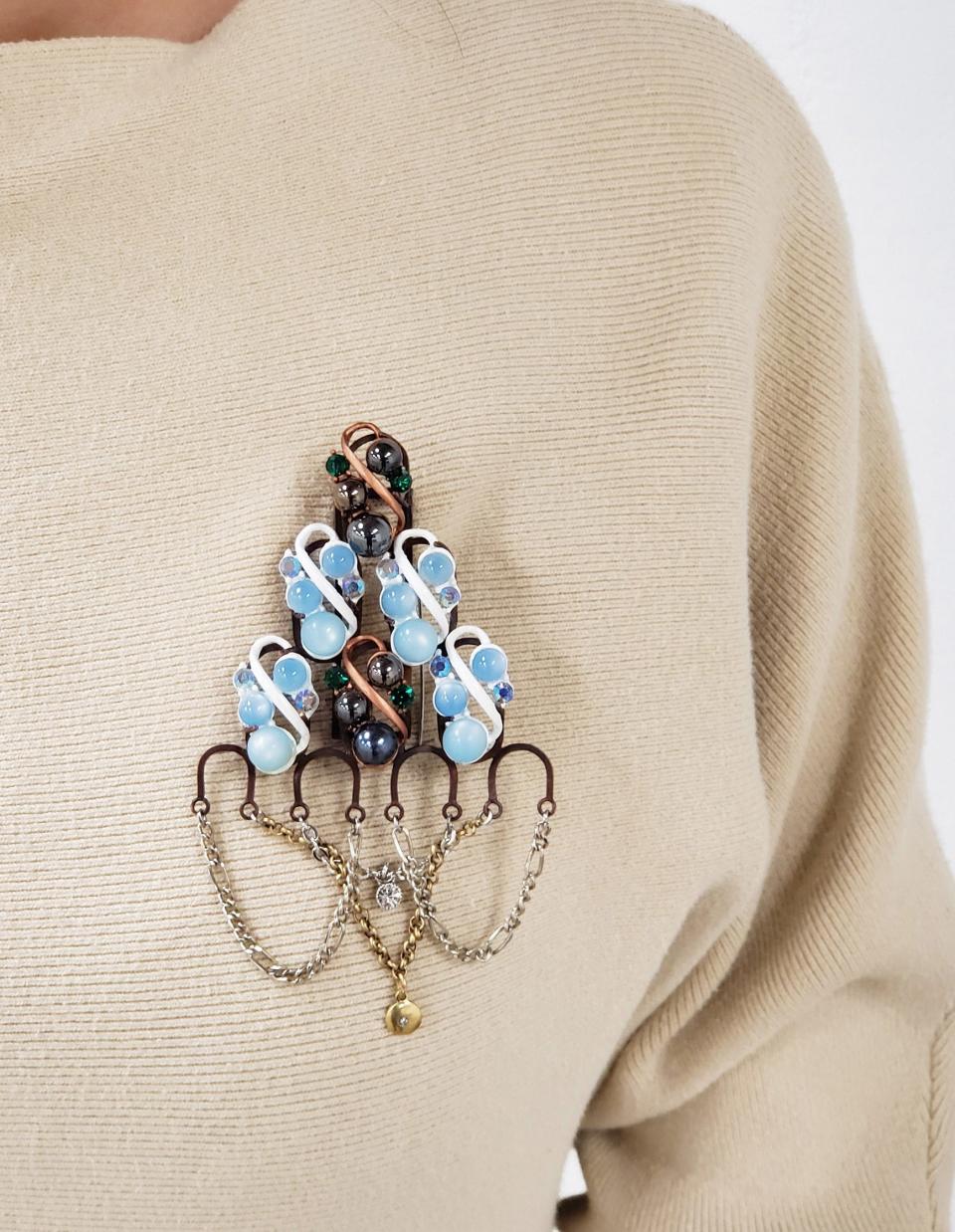
Each donor receives a discount on new collection
While the project is intended to teach students, it can also provide some relief to community members.
"Jewelry is so powerful. You carry so much, I think, emotional weight to it sometimes — even if it is just simple plastic Mardi Gras beads, like you think 'I don't want to throw it in the garbage,'" Kennedy said. "Seeing this call for a donation drive can take a weight off of community members' shoulders like 'Oh, I know who can take all of this broken jewelry or jewelry that I don't wear. We can give it to this project and it's gonna be made into new pieces of jewelry to go out into the world.'"
Donors are encouraged to write about how this jewelry came into their life or why it was important to them. The artists may gather inspiration and incorporate aspects of the jewelry’s history to add meaning to the piece's new design.
Each bag of donated materials will be given a value assessment by organizers, who will then use the contact information provided in the donation form to send out discount coupons to apply toward the purchase of a new piece. These coupons can be used at the spring exhibition.
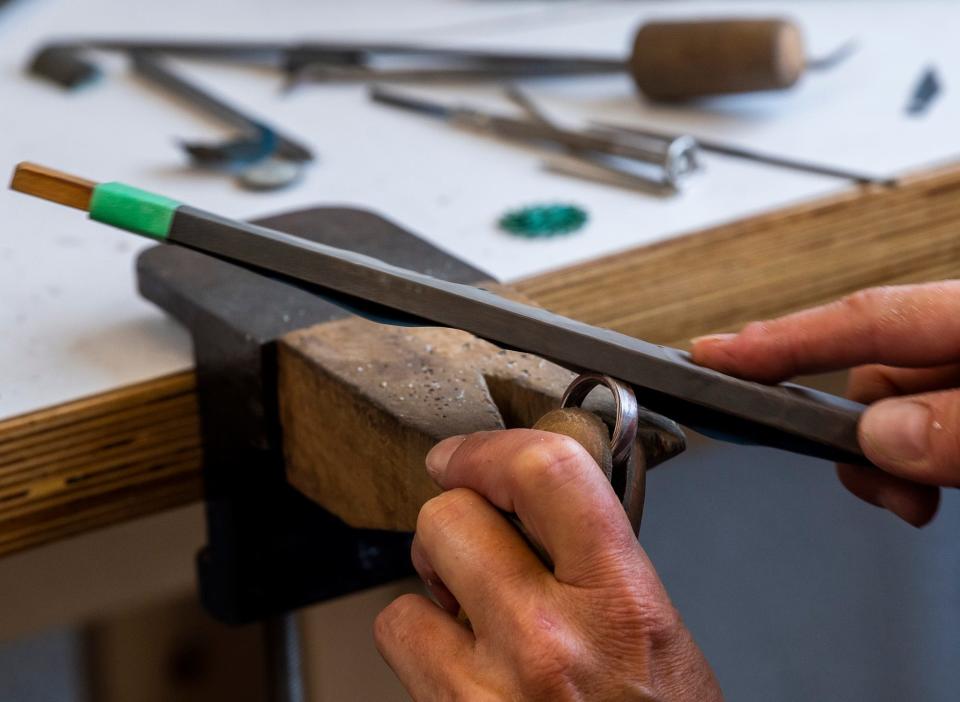
And who knows? Perhaps that initial donation will find a way back to its former owner.
"(Donors) might end up recognizing a piece that they donated and buy that piece or they might not even realize that the piece that they bought has the materials that they donated," Kennedy said.
Donors are asked to complete a submission form available through https://shorturl.at/pquzW or pick one up at the following Bloomington collection sites:
Bloomingfoods East, 3220 E. Third St.
I. Fell Gallery (First Fridays in July and August or by mail) 415 W. Fourth St.
Mirth, Fountain Square Mall, 101 W. Kirkwood No. 117
Grunwald Gallery of Art, 1201 E. Seventh St.
Donations may also be mailed to Indiana University, Eskenazi School of Art, Architecture + Design, Attn: Nicole Jacquard, 1201 E. 7th St. Rm. 132, Bloomington IN 47405.
The donation drive runs through Sept. 5.
Reach Rachel Smith at rksmith@heraldt.com.
This article originally appeared on The Herald-Times: Indiana University metalsmiths combat fast fashion by upcycling

